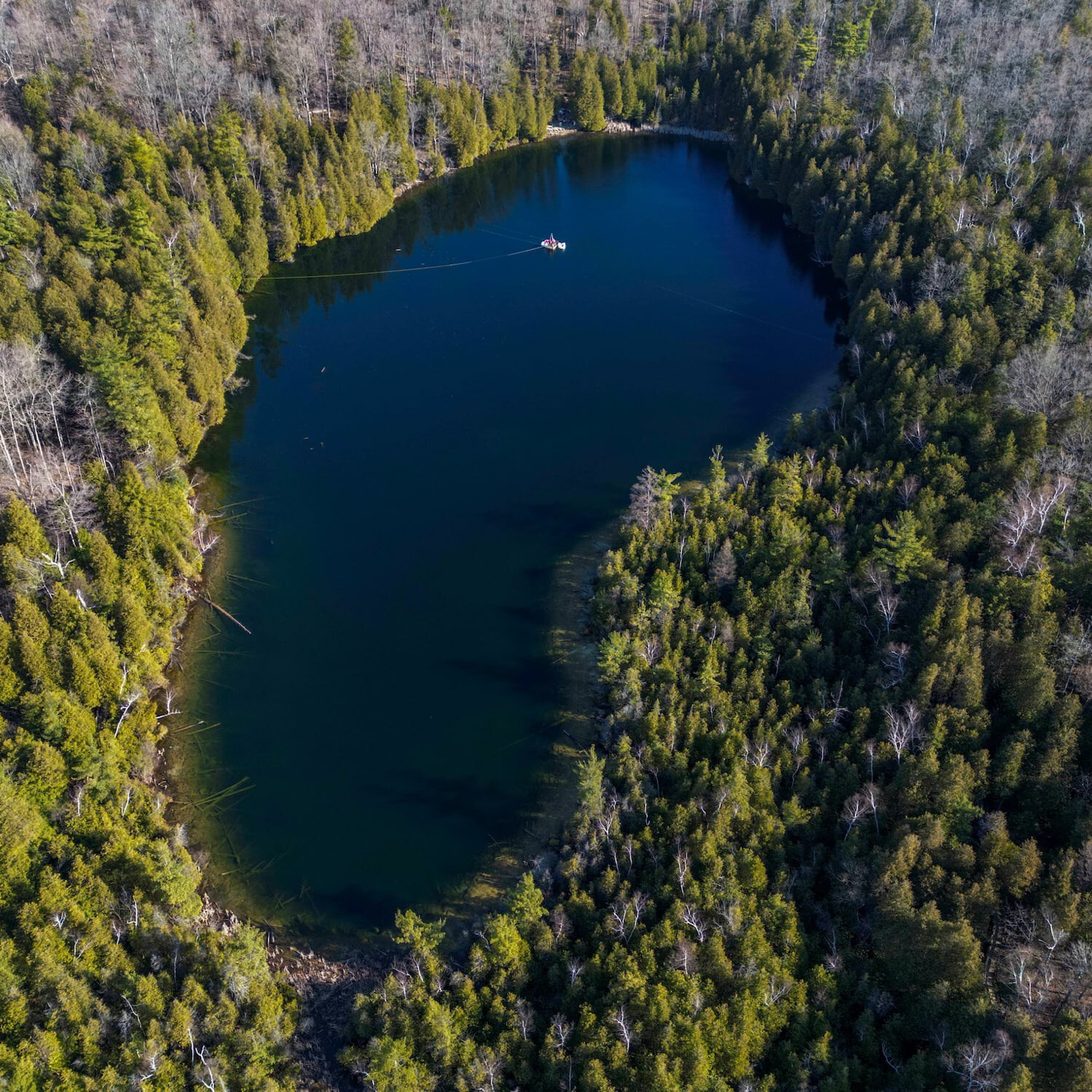A humble lake in a Canadian suburb may soon become the symbolic starting point for a radical new chapter in Earth’s official history: the Anthropocene, or the age of humans.
A group of scientists said Tuesday the best evidence for humanity’s overwhelming impact on the planet could be found at Crawford Lake in Milton, Ontario. The lake’s finely layered sediments contain a thousand-year record of environmental history, culminating in an explosion of man-made disruption around the middle of the 20th century. That’s when scientists say human activities — from nuclear weapons tests and fossil fuel combustion to deforestation and global trade — began to leave an indelible imprint on Earth’s geologic record.
The announcement marks a crucial step in a years-long effort to determine whether people have altered the planet enough to launch a new epoch in geologic time. Since 2009, an obscure scientific body called the Anthropocene Working Group has accumulated evidence that Earth’s chemistry and climate are fundamentally different from the conditions of the last several thousand years. The final requirement was to identify a “golden-spike” — a spot in the geologic record that perfectly preserved the dangerous transformation humans have wrought.
Crawford Lake shows that “all the different components of the Earth system and the way they interact with one another are fundamentally different than they used to be,” said Francine McCarthy, a professor of Earth sciences at Brock University in Ontario who led the working group’s research on the lake. “We felt it was the best place to illustrate this existential issue.”
Speaking from the International Congress on Stratigraphy — a semiregular meeting of researchers who study the phases of Earth’s past — working group members recommended that the Anthropocene be established as a new epoch beginning in 1950, with Crawford Lake as its golden spike.
Before the Anthropocene can be added to Earth’s 4.6-billion-year official timeline, it must withstand the scrutiny of the wider geology community. In the coming months, the proposal will go before the Subcommission on Quaternary Stratigraphy, which is responsible for subdividing the history of the last 2.4 million years. Then the larger International Commission on Stratigraphy will vote. If it can clear those bureaucratic hurdles, the proposal will be ratified next year at the International Geological Congress in South Korea.
Crawford Lake was selected from among 12 golden spike candidates around the globe, including the ice of Antarctica, two remote coral reefs, a mountaintop peat bog and a polluted California bay. Each contained evidence for the same simultaneous surge in human pollution around 1950 — particularly a sudden spike in radioactive plutonium from nuclear weapons testing, which will serve as the primary marker of the Anthropocene.
“There’s a very precise geochemical boundary that is present across the planet, across all environments,” said Colin Waters, a geologist at the University of Leicester and chair of the Anthropocene Working Group.
But after months of deliberation, the working group’s 22 voting members — including McCarthy and Waters — decided that Crawford Lake captured the evidence for the Anthropocene better than anywhere else. In addition to nuclear fallout, the lake holds signs of industrial pollution, species extinctions and global climate change. Tiny black particles called fly-ash — a byproduct of burning fossil fuels — are laced throughout the sediments. Shifts in the types of buried tree pollen show how the surrounding forest responded to steadily rising temperatures.
“It’s not just about climate change. It’s not just biodiversity loss. It’s not just the sediments that humans are moving. It’s all of this together,” said Jürgen Renn, director of the Max Planck Institute for the History of Science in Berlin, which supported the working group’s research. “We have to address them as a phenomenon that is multiply connected. And we have to make an effort to understand it and adapt our societies accordingly.”
The most popular and interesting stories of the day to keep you in the know. In your inbox, every day.
Yet not all scientists are convinced that the Anthropocene belongs on the geologic time scale.
All other epochs have been named millennia after they occurred. They are defined not by instrumental data and witness accounts, but by the records of environmental change stored in rocks, tree rings, sediments and ice. A Tunisian cliff face bearing evidence of an ancient meteor impact signals the end of the age of dinosaurs. The start of the Holocene — the epoch that encompasses the last 11,700 years — is marked by molecules of hydrogen trapped in ancient Greenlandic ice.
“I’m not sure if something that is ephemeral as a couple of decades can count as a new geological age,” said archaeologist Sturt Manning, who directs Cornell University’s tree ring laboratory. “You can’t really define your own time.”
Other researchers worry that giving the Anthropocene a strict geologic definition may have ripple effects far beyond the hidebound halls of academia.
“The stories we tell aren’t just scientifically neutral stories,” said Andrew Bauer, an anthropologist at Stanford University who studies human interactions with the environment. “There are potential political ramifications.”
For example, he said, the designation of the mid-20th century as the Anthropocene’s starting point could lead people to trivialize human impacts before that date. On the other hand, the term “Anthropocene” implies that all people are equally responsible for the transformation of the planet — when research shows that the world’s wealthiest people and nations account for the majority of carbon emissions and other environmental harms.
“No one that I know that’s been critical of the Anthropocene wants to deny the effects of humans on the Earth system,” Bauer said. He is among a group of scientists who have proposed that the concept be defined as geologic “event,” rather than an epoch — a more flexible term that could encompass all the nuanced ways people have reshaped and been shaped by nature over thousands of years.
“The concept of an unprecedented geological transformation having occurred in the last 70 years is a big statement,” acknowledged Simon Turner, an environmental scientist at University College London and secretary of the Anthropocene Working Group.
But the evidence from Crawford Lake and the other sites the working group studied is “undeniable,” he said — and it gets stronger every year. As long as people continue to wreak environmental havoc, he said, the consequences of those choices will continue to be etched into the Earth.
Yet even if the Anthropocene is never formally added to Earth’s geologic time scale, McCarthy hopes the findings from Crawford Lake will “nudge” people to confront climate change, biodiversity loss and other environmental upheavals.
“It will at the very least have been an effort to quantify and communicate how quickly and how irrevocably our actions can change big things that people would not have thought could change,” McCarthy said.




